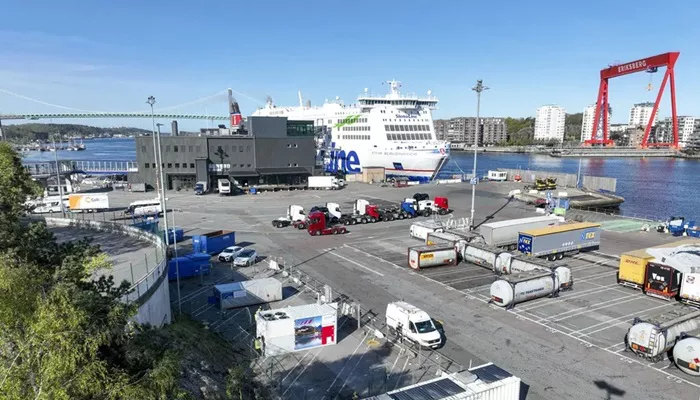The Port of Gothenburg is testing a new way to power ships with electricity using hydrogen. The pilot project, now in its final phase, could help reduce emissions in ports that cannot install traditional shore power systems.
Using electricity instead of engines while ships are docked can cut carbon dioxide emissions significantly. The Port of Gothenburg was one of the first in the world to install On-shore Power Supply (OPS) in the early 2000s. These systems allowed ships at the Stena Line terminals for Germany and Denmark to connect to land-based electricity.
But many ports in Europe and around the world are still behind. They often lack the infrastructure and funding to build OPS systems. These systems require large investments and a strong electrical grid.
For these ports, mobile hydrogen generators could be a solution. The generator being tested at Stena Line’s Germany terminal in Gothenburg might offer a practical option.
The test has run for two weeks. A hydrogen-powered generator was connected to the existing shore power system at the terminal. The generator used green hydrogen to supply electricity to two ships—Stena Germanica and Stena Scandinavica—while they were docked.
“At Stena Line, we want to try new technology to cut emissions from shipping,” said Anders Peterson, Group Head of Port Development & Engineering at Stena Line. “This test shows that ports without full shore power systems can still reduce emissions.”
Hydrogen Could Help Ports Meet EU Rules
In 2030, new EU rules will require container and passenger ships to use shore power while docked. A study by the International Council on Clean Transportation (ICCT) says this could cut emissions by more than one million tonnes of CO₂ each year.
Viktor Allgurén, Head of Innovation at the Port of Gothenburg, believes hydrogen can help ports meet these rules.
“The climate is everyone’s responsibility,” said Allgurén. “We want as many ports as possible to meet the new requirements. With our long experience in OPS, we are glad to work with Stena Line and help test this technology. It could be a good option for many other ports.”
The hydrogen generator in the trial was developed by Hitachi Energy. Power modules and fuel cell integration were provided by PowerCell Group, one of Hitachi’s technology partners. The generator ran on 100% green hydrogen supplied by Linde Gas.
Tobias Hansson, Managing Director of Hitachi Energy in Sweden, praised the project.
“We are pleased with this latest collaboration with Stena Line, PowerCell Group, Linde Gas, and the Port of Gothenburg,” Hansson said. “We want to explore more uses for our HyFlex technology—from building sites to port terminals—as part of the global shift to clean energy.”
Hydrogen is already being used in other ways at the Port of Gothenburg. There is a refueling station for hydrogen-powered trucks. Hydrogen work vehicles are also being tested. The same technology used in the OPS trial was recently used by Skanska to power heavy equipment during a major terminal expansion project.

